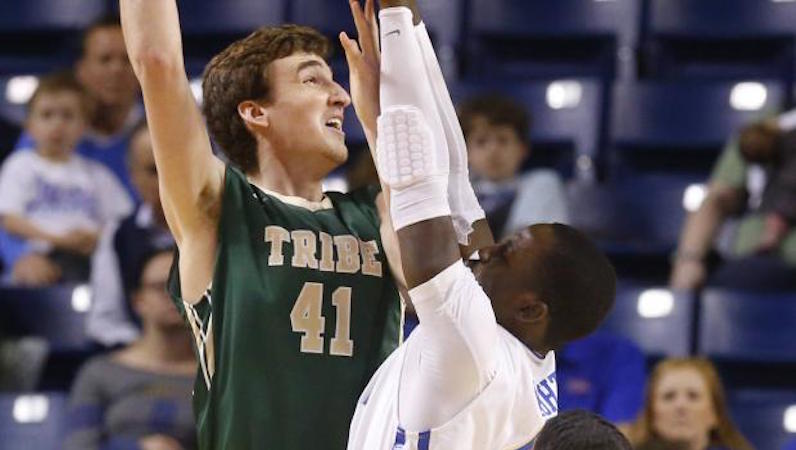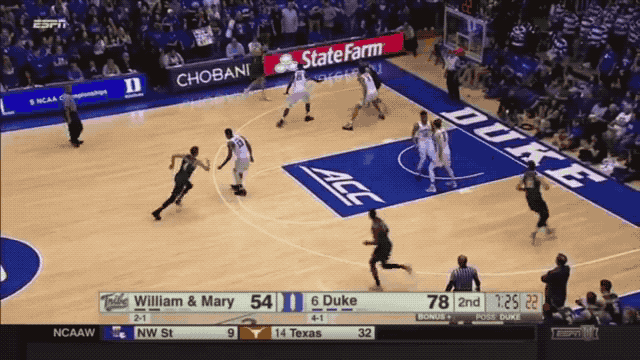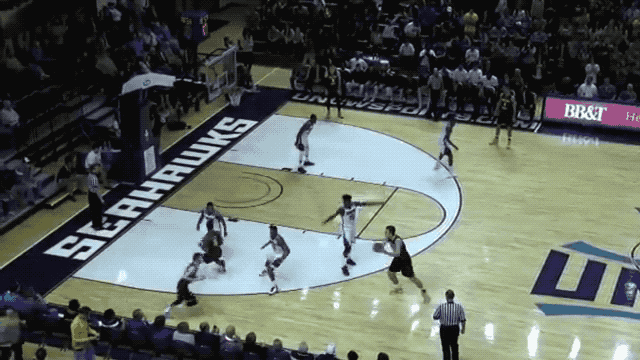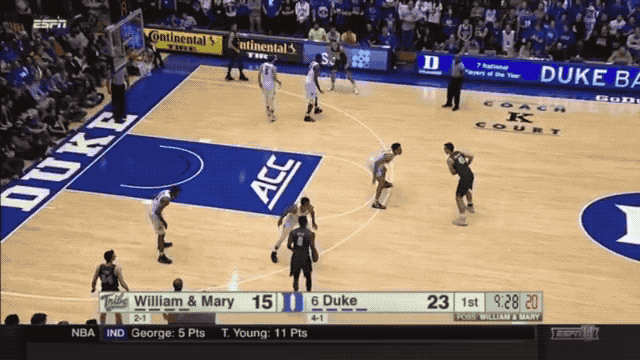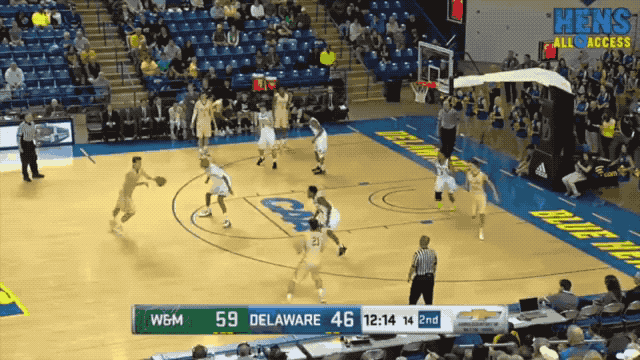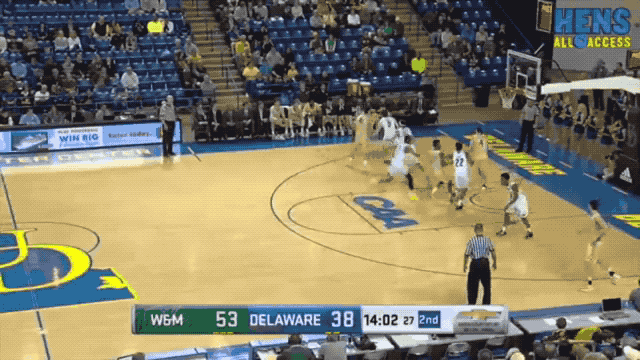Wake Forest basketball was caught off guard this week when it became official that senior forward Dinos Mitoglu would forego his final season of college basketball, and go play professionally in Greece.
The Demon Deacons are already dealing with the loss of John Collins after his sophomore season to the NBA; Mitoglu figured to be a key character in replacing some of that production. That, however, is no longer the case.
With its current personnel, Wake Forest doesn’t have a lot of great options. If the roster stays pat, this is a team that will likely have to play small — not such a bad option — or with a lack of experience along its frontline — not so great of an option.
The graduate transfer market is an avenue, of course. But a lot of the available players have already found a new home. It’s August. As Blogger So Dear mentioned, though, at least one very good player does still remains: William & Mary transfer Jack Whitman.
Follow the yellow brick road…out of town?
Back in early May, the 6-foot-9 Whitman announced that he planned to play his senior season at Kansas.
However, less than three months after that decision, Whitman decided last week to leave Kansas. This opens the proverbial door for Wake Forest — which targeted Whitman back in March, before he initially decided on the Jayhawks.
A proclivity for productivity
The counting statistics of Jack Whitman likely won’t blow you away; he averaged a respectable 10.1 points and 5.4 rebounds. Dig a little deeper, though, and there’s plenty to get excited about. His efficiency number are terrific.
John Collins and his low post dominance are gone, but Whitman was very good on the block last season, too.
According to Synergy Sports, Whitman shot 52.8 percent and scored 1.04 points per possession on post-ups in 2016-17 — good for 34th nationally amongst players with at least 50 possessions.
On this possession at Duke, Whitman dribbles — from about 16 feet out — around a double team from Amile Jefferson and Chase Jeter and scores. No easy task.
On non-post-ups around the basket, Whitman shot 67.3 percent, per Synergy, which is good for 57th in Division I basketball (minimum 90 possessions). That’s also not too far from John Collins, who shot 69.2 percent on said possessions.
Additionally, Whitman is very clever at drawing contact. Per KenPom, Whitman drew 6.4 fouls per 40 minutes, which ranked 54th in the nation. Whitman isn’t a great free throw shooter (59.7 percent), but he did attempt 13 free throws per 100 possessions.
Jack Whitman was also one of just 24 Division I players to average 10 points, one assist, shoot 60-plus percent from the field and post an offensive rebounding rate of better than 10 percent. The only player in the ACC to hit those benchmarks last season was Duke’s Amile Jefferson.
Offensive fit
As we’ve discussed in this space on numerous occasions, one of the ways Wake Forest built a top ten offense last season was its ability to carve up opponents in the pick-and-roll. Collins was a major factor here, but Bryant Crawford and Keyshawn Woods certainly helped the cause, too.
Jack Whitman would pair nicely here as well.
Over 15 percent of the possessions used this season by Whitman were spent as a roll man in pick-and-roll action. The results were rather good, too.
Back to the Duke game — Whitman uses a dribble handoff to launch the screen-and-roll. This isn’t the best defense from Jeter and Luke Kennard; Jefferson’s help is too late, too.
Per Synergy, Whitman shot 83.3 percent and scored 1.43 points per possession as a roller. That ranks No. 7 nationally amongst players with at least 40 possessions. Collins, by the way, was No. 2: 1.61 points per possession.
Wake Forest loves to run pick-and-rolls from the sides of the floor. Crawford, especially, is deft at navigating these waters. With the floor spread, Whitman flashed the ability to operate as a rim-runner from the side. Watch this gorgeous slip-and-finish against a Delaware defense that Whitman found napping.
Collins did a lot of awesome stuff for Wake Forest on offense this season. One of his many strengths was what he did after a screen-roll if he didn’t get the ball. Collins would take advantage of a rotating defense, and use that to leverage post possession, or territory around the basket for an offensive rebound.
Whitman showed he can do that, too. In this side pick-and-roll against Delaware, Whitman doesn’t get the ball immediately on the roll; however, with his trailing defender behind him, Whitman seals, and is open for a lob over the top.
Whitman, for the record, posted an offensive rebounding rate of 11.1 percent — a top 150 number nationally, according to KenPom.
Competition: No real worries
Before you saying anything about doing Whitman doing this against inferior opponents, you need to learn a couple quick things.
First off, the CAA is no joke; in fact, the Colonial ranked as the 12th best conference in America last season, per KenPom. William & Mary won 18 games, and was No. 52 nationally in offensive efficiency: 112 points per 100 possessions.
More to the point: Jack Whitman was really good against tough competition. When facing top-5o opponents, Whitman posted an offensive rating of nearly 111 points per 100 possession.
That includes a 13-point performance in Cameron Indoor Stadium last November, when Whitman didn’t miss a shot from the field against Duke.
Whitman had troubles against Louisville’s frontcourt — most players do — but he was terrific in three match-ups with Kevin Keatts and UNC Wilmington. He averaged 12 points, 4.7 rebounds and shot 76.5 percent from the field.
Read More
Slot Machine: Tabari Hines leads Wake Forest’s quick passing attack

















